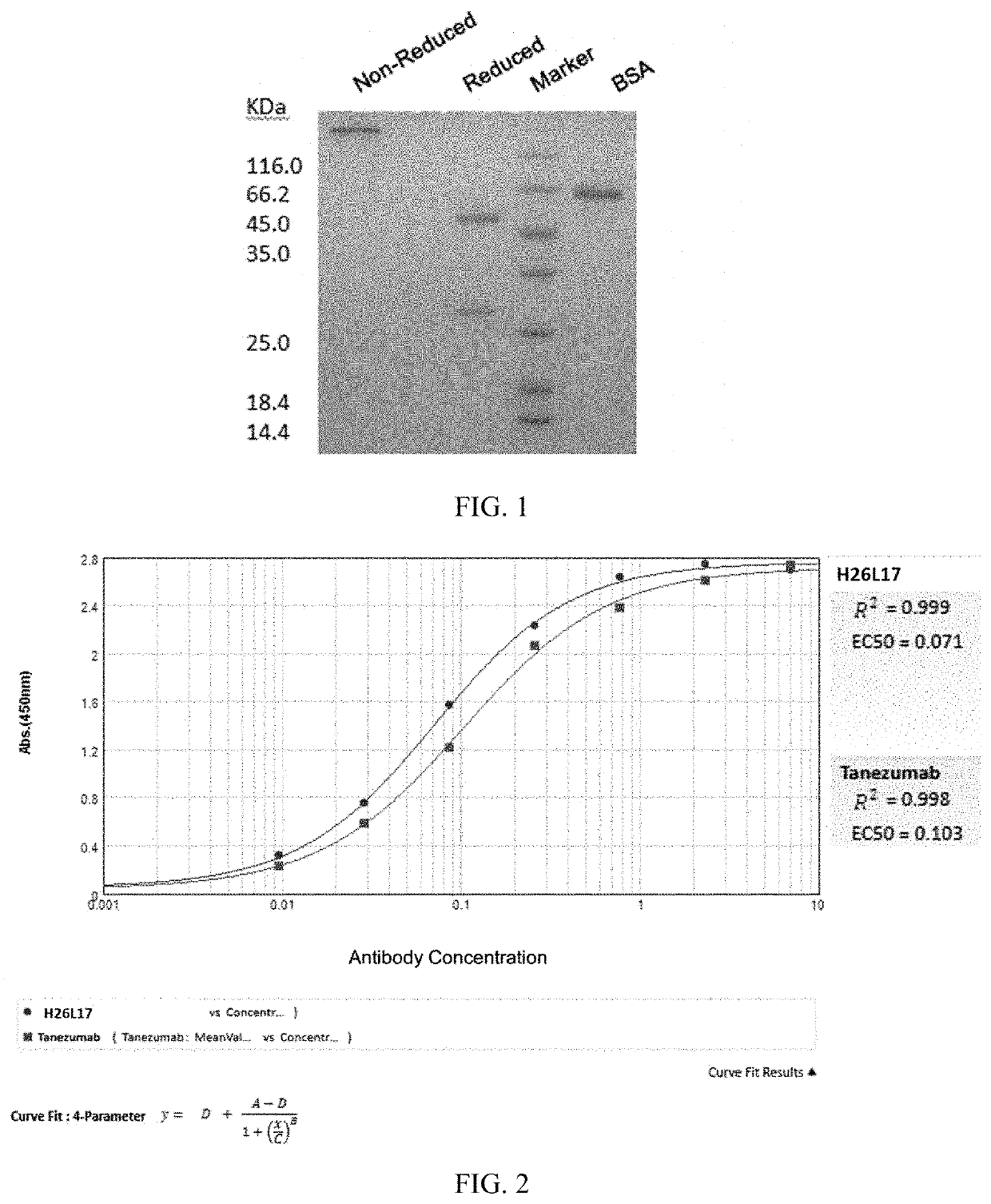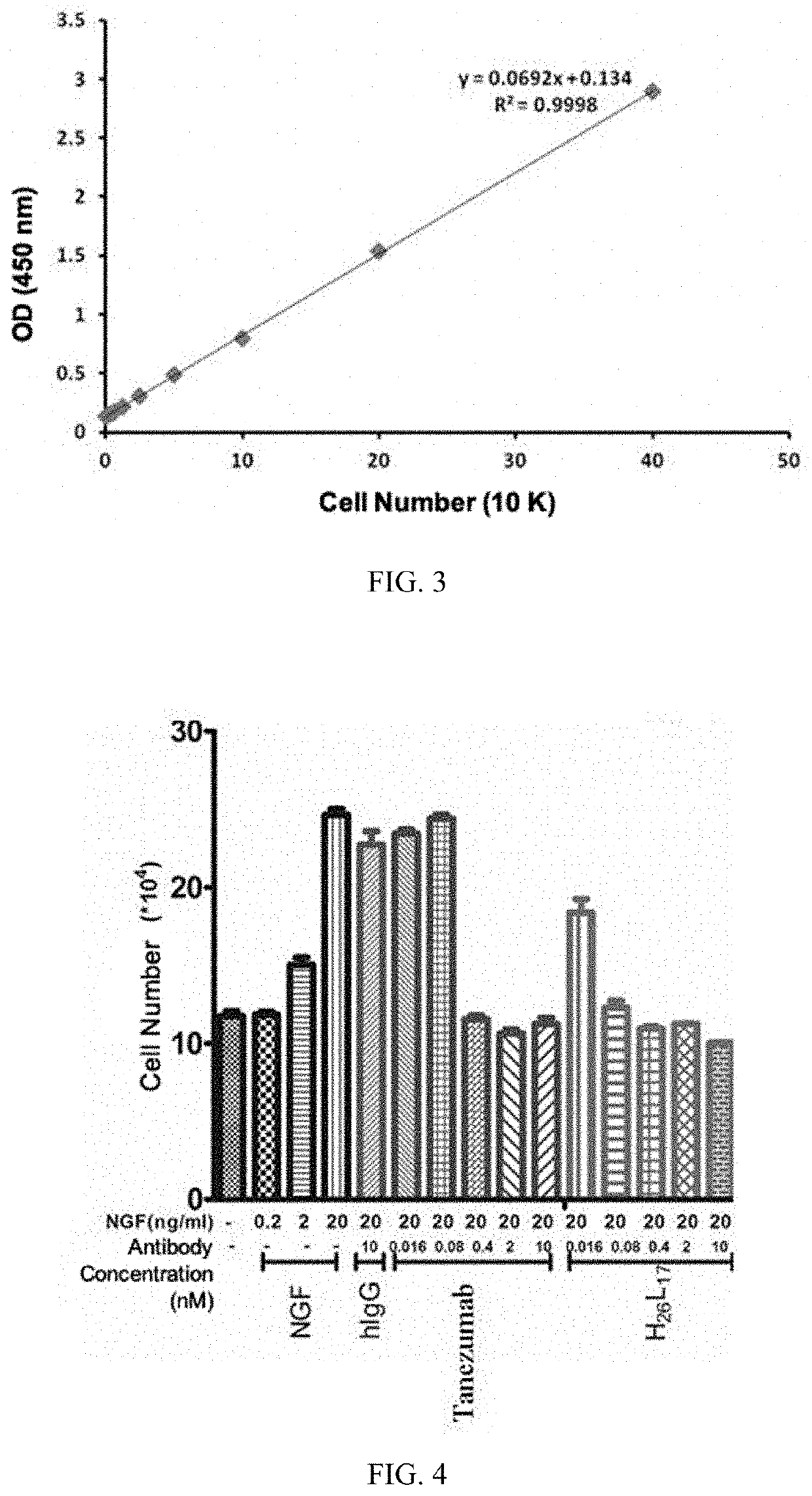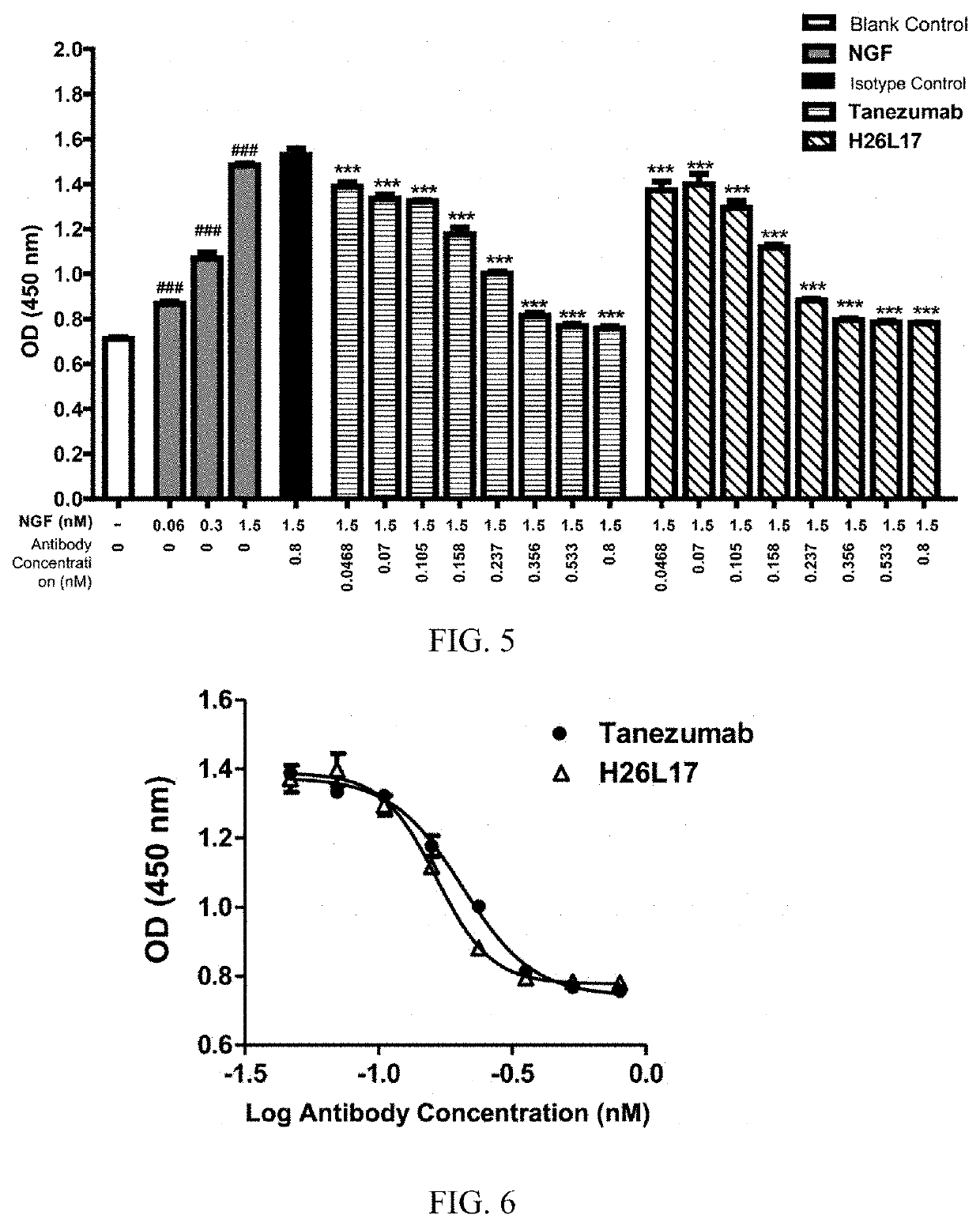Monoclonal antibody of nerve growth factor, and encoding gene and use thereof
- Summary
- Abstract
- Description
- Claims
- Application Information
AI Technical Summary
Benefits of technology
Problems solved by technology
Method used
Image
Examples
example 1
xpression and Purification of H26L17 Heavy Chain and Light Chain Sequences
[0059]1. Design of Antibody
[0060]In order to generate anti-human NGF antibody H26L17, the inventors creatively designed a series of antibody sequences based on the NGF protein sequence and three-dimensional crystal structure thereof, etc. Through extensive screening and analyses, an antibody, H26L17, that specifically binds to NGF was finally obtained. The amino acid sequences of the heavy chain variable region and the light chain variable region of the antibody and the encoding DNA sequences thereof are set forth in SEQ ID NOs: 1-4.
[0061]2. Expression and Purification of Antibody
[0062]The encoding nucleotide sequence of the heavy chain variable region (set forth in SEQ ID NO: 1; the constant region is Ig gamma-1 chain C region, ACCESSION: P01857) and the encoding nucleotide sequence of the light chain variable region (set forth in SEQ ID NO: 3; the constant region is Ig lambda-2 chain C region; ACCESSION: P0C...
example 2
of the Binding Activity of H26L17 to the Antigen Human β-NGF
[0066]In this experiment, the ELISA method was used to determine the EC50 (median effect concentration) of H26L17 binding to human β-NGF to investigate the binding specificity and affinity of the antibody to human β-NGF.
[0067]A microplate was coated with 50 L of 0.5 μg / mL human β-NGF in each well, and incubated overnight at 4° C. After the microplate was washed once and patted dry, each well was blocked with 300 L of 1% BSA solution (dissolved in PBS). The microplate was incubated at 37° C. for 2 h, and patted dry after being washed three times. The antibody was diluted to 1 μg / mL as the initial concentration, and a 1:3 gradient dilution was performed in the microplate to obtain a total of 7 concentrations, in addition to a blank control well. Duplicate wells were set for the above concentrations, with a final volume of 100 μL per well, and the microplate was incubated at 37° C. for 30 min. After the microplate was washed t...
example 3
of Cell Biological Activity of H26L17
[0069]1. Analysis of the Pharmacological Activity of H26L17 in Inhibiting NGF-Induced TF-1 Cell Proliferation
[0070]In order to analyze the effect of H26L17 in inhibiting NGF-dependent TF-1 cell proliferation, antibodies, NGF and TF-1 cells of different concentrations were co-incubated and the cell proliferation was measured after 72 h of culturing. The specific procedures are as follows:
[0071]TF-1 cells were collected by centrifugation and counted, and 40,000 cells were seeded in each well of a 96-well plate. For administration, the control group was set with three NGF concentrations: 0.2, 2, and 20 ng / mL, and the antibody group was set with 20 ng / mL NGF; the antibody was set with five concentrations: 0.016 nM, 0.08 nM, 0.4 nM, 2 nM, and 10 nM. Before administering the NGF / antibody premix to cells, the antibody and NGF were pre-incubated at 37° C. for 30 min. In the experiment, an isotype control group was also included. After the cells were cult...
PUM
| Property | Measurement | Unit |
|---|---|---|
| Density | aaaaa | aaaaa |
Abstract
Description
Claims
Application Information
 Login to View More
Login to View More - R&D
- Intellectual Property
- Life Sciences
- Materials
- Tech Scout
- Unparalleled Data Quality
- Higher Quality Content
- 60% Fewer Hallucinations
Browse by: Latest US Patents, China's latest patents, Technical Efficacy Thesaurus, Application Domain, Technology Topic, Popular Technical Reports.
© 2025 PatSnap. All rights reserved.Legal|Privacy policy|Modern Slavery Act Transparency Statement|Sitemap|About US| Contact US: help@patsnap.com



